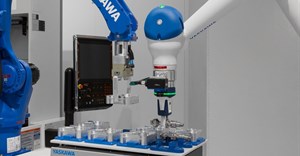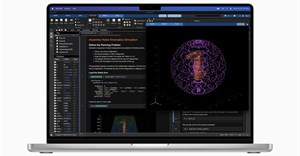Trending




 Sabre EMEA 2024 Awards: Razor PR, Retroviral top SA agenciesDanette Breitenbach
Sabre EMEA 2024 Awards: Razor PR, Retroviral top SA agenciesDanette Breitenbach
Elections 2024
Towards an AI-led 2020

AI, machine learning, and data science are becoming more mainstream in larger organisations in South Africa. Thanks to the availability of the local Azure data centres, AI has become much easier to use, and companies are able to make use of Cognitive Services for image recognition, text analysis and form recognition capabilities without actually having to write AI models themselves.
This approach is low-cost to kick-start and there is no need to set up a massive hardware environment to start getting value. To this end, a business can start taking advantage of AI using cognitive services and Azure Machine Learning to deliver increased efficiencies.
Today, software is more intuitive with many built-in machine learning capabilities that anticipate what people are doing instead of employees having to initiate the processes themselves – such as Microsoft’s MyAnalytics feature in Outlook 365 which analyses your office life and recommends improvements to your work methodology.
Overcoming concerns
In 2020 and beyond, people must have a wider breadth of skills in the marketplace to compete. So, instead of pushing employees into more niche positions where they can potentially be made redundant, leaders must look at those people’s ability to think, quickly take on new skills, and have an aptitude for working with digital technologies.
The digital factory
One of the most exciting developments in the pipeline is the concept of the digital factory. Rather than a traditional project approach, the digital factory is about quickly delivering a stream of minimum viable software products that can be used as workable solutions.
The focus is entirely on innovation and relies on an Agile methodology and the cloud to deliver value, often using AI as part of the solution. However, the digital factory is different from the traditional ‘innovation lab’ as the product has to get used to providing value to the organisation.
The digital factory creates an environment that brings together people from inside the organisation, its suppliers, and other stakeholders to deliver solutions proactively. This results in proof by adoption. Limiting this is the high costs involved in building this capability. It also requires strict usage-measuring capabilities to provide the feedback required to determine whether each solution is providing value effectively.
For the digital factory to work, the expectation is that everything is connected. Users want integration to happen automatically. For example, they want to use one component with Azure and have that integrate seamlessly with other components that are firmly grounded on-premise. In this environment, the intention is to have no more silos between products. And ultimately, it makes it easier for people to access their data.
Integrate everything
2020 provides impetus to the idea of a common data model. When companies are dealing with the movement of data between business applications, it makes sense that there is standardisation in certain common entities, such as customers, products, and suppliers.
This model has been pushed by Microsoft through the Open Data Initiative and has seen collaboration starting between companies such as SAP, Adobe, and Software AG. It makes data integration and the consolidation of information that much easier to do.
Robotic Process Automation (RPA) will start living up to its hype this year. It is becoming more intelligent, easier to use, and proactively enables people to build processes. This year will see it move beyond the proof of concept phase into production and delivering a day-to-day return for organisations. It comes down to moving away from the idea of a programmer having to build processes. With RPA, users can do it themselves according to their unique requirements.
All told, 2020 has heralded in a new era of optimism around how technology can be used to create opportunities at organisations of all sizes across industry sectors. While there are no easy fixes to the current challenges, there is definitely hope that AI, automation, BI and other technologies can be used to unlock value that will help make the shift in the market.











